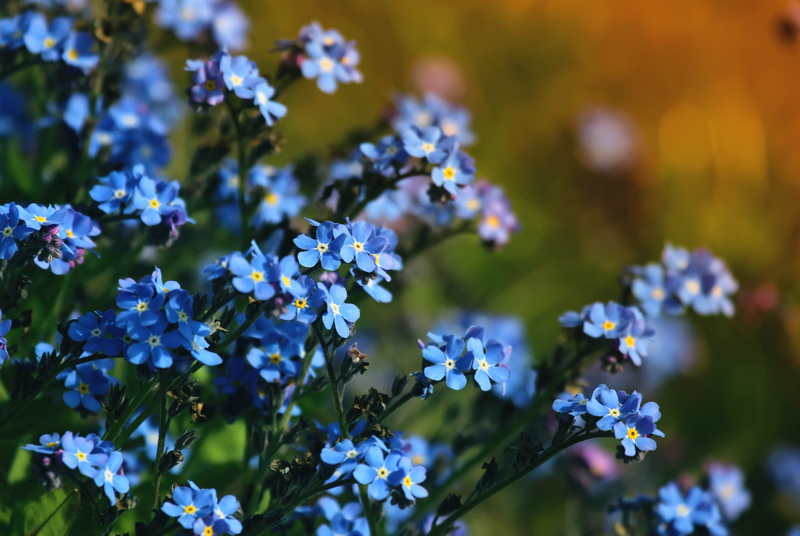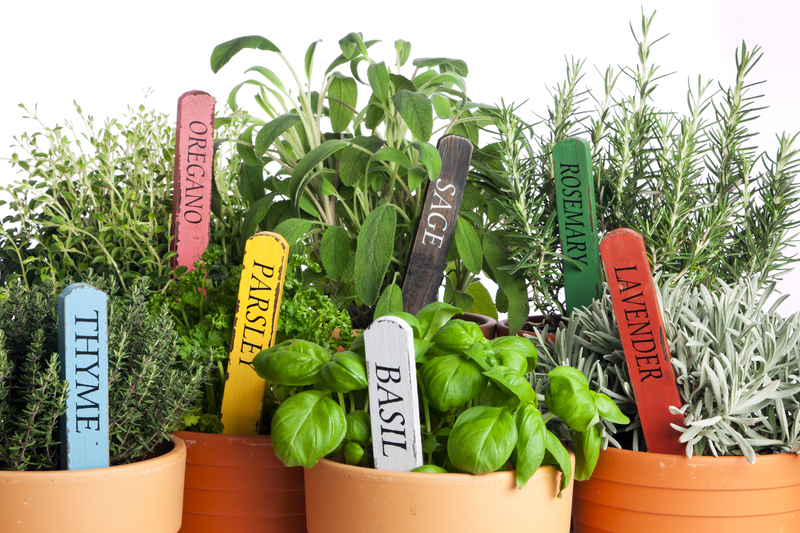Battling Winter's Freeze to Save Garden Plants
Posted on 01/06/2025
Battling Winter's Freeze to Save Garden Plants: A Comprehensive Guide
As the cold air sets in and frost dusts the landscape, protecting your garden plants from winter's freeze becomes a top priority for every gardener. Harsh winter weather, including freezing temperatures, icy winds, and snow, can harm or even destroy valuable plants that you've nurtured during the warmer months. Fortunately, there are a range of time-tested and innovative strategies for battling winter's freeze to save garden plants, ensuring they emerge healthy and vibrant when spring arrives.

Understanding the Risks of Winter Freeze for Garden Plants
Winter brings unique challenges to the garden. While some plants thrive in the cold, others are especially vulnerable. In this section, we'll explore why freezing temperatures threaten garden plants and which ones are most at risk.
How Cold Weather Affects Plants
- Cellular Damage: When temperatures plummet below freezing, water inside plant cells can crystallize, rupturing cell walls and causing irreversible damage.
- Desiccation: Cold winds and frozen soil can make it difficult for plants to absorb water, leading to dehydration even in moist conditions.
- Frost Heaving: Repeated thawing and freezing can push plants out of the soil, exposing roots and making them vulnerable to further cold damage.
Plants Most Vulnerable to Freezing
- Tender perennials (e.g., dahlias, cannas)
- Young or newly planted trees and shrubs
- Evergreens, especially broadleaf varieties
- Tropical and sub-tropical plants being grown outside their usual zones
- Container plants due to their exposed roots
Protecting these plants from winter freeze should be a key aspect of your winter gardening plan.
Essential Tips: How to Protect Garden Plants from Winter's Freeze
Effective winter plant protection involves a combination of preparation, timely action, and tailored care. Use these proven strategies to shield your garden from the worst of the cold.
1. Mulching: Insulate and Protect
Mulch acts as a natural blanket for your plants, minimizing temperature fluctuations in the soil and protecting roots from frost.
- Apply a thick layer (2-4 inches) of organic mulch such as straw, shredded leaves, pine needles, or wood chips around the base of plants.
- Mulch regulates soil temperature, retains moisture, and reduces root exposure during freeze-thaw cycles.
- Replenish mulch as needed if it becomes compacted or is blown away by winter winds.
Remember: Keep mulch a few inches away from stems and trunks to prevent rot.
2. Covering With Frost Cloths, Sheets, or Blankets
Covers trap ground warmth and prevent frost from settling directly on plants. This is especially useful for sudden cold snaps.
- Drape frost cloths, burlap, old sheets, or light blankets loosely over plants, securing the edges to the ground with stakes or stones.
- Remove covers in the morning when temperatures rise to allow for air circulation and photosynthesis.
- Never use plastic directly on plants--condensation or sun exposure beneath can cause more harm than good.
3. Water Wisely Before Freezes
Moist soil holds more heat than dry soil. Water your garden thoroughly a day or two before freezing temperatures are forecast.
- Pay attention to evergreens in particular; they are prone to winter desiccation.
- Avoid watering if the soil is already frozen to prevent root damage.
4. Protecting Container Plants
Plants in pots or containers are more susceptible to freezing since their roots are not insulated by the ground.
- Move containers to a sheltered location, such as an unheated garage, basement, or against the house wall.
- Wrap pots with bubble wrap, burlap, or blankets to provide extra insulation.
- Group pots together for additional protection, ideally out of windy areas.
5. Build Simple Plant Shelters or Cloches
Homemade shelters can effectively guard tender plants during harsh winter weather.
- Use wire cages or tomato cages covered with burlap or frost cloth.
- Upside-down buckets, large flower pots, or homemade frames work well for sudden cold snaps.
Be creative--just ensure ventilation and remove covers during milder weather.
6. Prune With Caution
While pruning can prepare plants for winter, prune only when necessary before the worst cold arrives.
- Remove dead, diseased, or crossing branches to prevent snow loads and wind damage.
- Avoid heavy pruning in late summer or fall, as this can encourage tender new growth vulnerable to frost.
7. Use Windbreaks to Shield Plants from Harsh Winds
Winter winds can exacerbate freezing damage. Creating windbreaks can help protect sensitive plants.
- Use fences, burlap screens, or thick hedges on the windward side of your garden.
- Position windbreaks to block prevailing winds but allow for good air circulation.
Special Considerations for Different Plant Types
How to Protect Evergreens During Winter
Evergreens, especially broadleaf varieties, suffer from winter burn due to dehydration.
- Water thoroughly before the ground freezes.
- Apply anti-desiccant sprays to leaves to reduce water loss.
- Wrap smaller evergreens with burlap or use windbreaks for added protection.
Caring for Perennials and Bulbs
- Cut perennials back after the first hard frost.
- Apply mulch thickly over crowns and root zones to provide insulation.
- For tender bulbs (e.g., dahlias, gladiolus), dig up and store indoors in a cool, dry place.
Safeguarding Roses from Freeze Damage
- Mound soil or mulch around the base of rose bushes for extra root protection.
- Wrap with burlap if your area experiences particularly severe freezes.
- Prune long canes to prevent wind breakage but leave most cutting until spring.
Tips for Fruit Trees and Shrubs
- Apply a thick mulch ring around the base, keeping it an inch or two away from the trunk.
- For young trees, wrap trunks with tree guards to prevent splitting from freeze-thaw cycles.
- Protect buds and branches with fabric wraps or burlap if a hard freeze is forecast.
Common Mistakes in Protecting Garden Plants from Winter Freeze
Even with the best intentions, some common errors can undermine your efforts in winter proofing your garden plants.
- Leaving covers on during the day: Excess heat or lack of sunlight can stress or kill covered plants.
- Improper mulching: Piling mulch too high on stems can cause rot; using improper materials can harbor pests or disease.
- Over-watering before a freeze: Soaked, non-draining soil can freeze solid and suffocate roots.
- Forgetting wind protection: Wind is as damaging as cold--don't overlook this crucial step.
Advanced Strategies for Battling Winter's Freeze
Row Covers and Cold Frames
Row covers and cold frames offer ongoing, reusable protection for valuable garden crops and ornamentals.
- Row covers made of spun-bonded fabric allow light and moisture through, while guarding against frost and pests.
- Cold frames--small, low greenhouses with transparent tops--shield plants from cold and extend the growing season.
Heated Solutions for High-Value Plants
- Use soil heating cables, heating mats, or even Christmas lights (non-LED) under covers to gently raise temperature during freezes.
- These approaches are best reserved for high-value or especially sensitive plants, due to cost and energy use.
Utilizing Microclimates
Take advantage of microclimate gardening by planting sensitive species near warm south- or west-facing walls, fences, or beneath tree canopies.
- Brick, stone, and pavement absorb daytime heat and release it at night, moderating temperature swings.
- Dense plantings and features like water elements can also limit the worst effects of winter chill.
Planning for Future Winters: Garden Design and Plant Choice
Long-term success in guarding your garden against winter freezes begins with smart choices long before frost arrives.
Choose Hardy Plant Varieties
- Select plants rated for your USDA Hardiness Zone or lower, especially for perennials, shrubs, and trees.
- Research and utilize cultivars bred for cold tolerance and resilience.
Plant at the Right Time
- Avoid planting new perennials, trees, and shrubs late in the fall, when they don't have time to establish roots.
- Spring and early fall plantings give roots time to grow strong before winter arrives.
Design Gardens With Winter Protection in Mind
- Use windbreaks, hedges, and walls as integral parts of your garden layout.
- Arrange less-hardy plants in sheltered spots, and site beds for maximum sun exposure.
What To Do After Winter: Helping Plants Recover
Even with the best strategies, some winter damage is inevitable. Spring recovery is crucial for garden vitality.
- Remove lingering mulch early so new growth can emerge unimpeded.
- Prune back any frost-damaged branches, stems, or leaves.
- Fertilize and water to encourage regrowth, but avoid over-fertilizing stressed plants.
- Watch for disease or pests, which may exploit winter-weakened specimens.

Frequently Asked Questions About Winter Plant Protection
- When should I start protecting my garden from freeze?
Start preparations before your typical first frost date, but apply covers and extra mulches when a hard freeze is imminent. - Is it necessary to protect native plants during winter?
Most native plants are adapted to local winters and should not need extra protection unless newly planted or exposed to extreme anomalies. - How can I tell if a plant has survived the winter?
Inspect for green stems under the bark, visible buds, and new shoots emerging in spring. Patience is key--some species resprout later than others.
Conclusion: Winning the War Against Winter's Chill
Battling winter's freeze to save garden plants requires readiness, vigilance, and a little creativity. By understanding the effects of cold weather, preparing your garden, and offering smart, timely protection, you'll give your treasured plants the best chance at survival. Remember: every garden is unique, so experiment with these techniques and tailor your approach as needed.
With thoughtful planning and reliable protection measures, not only will your garden endure the coldest months--it will thrive and blossom anew when warmth returns!
- Start now: Use these tips to create your winter plant protection checklist.
- Share your experiences: Every gardener learns something new each season--swap lessons and success stories with your community.
Let this winter be the turning point for your garden's growing success, no matter how fierce the frost may be.

